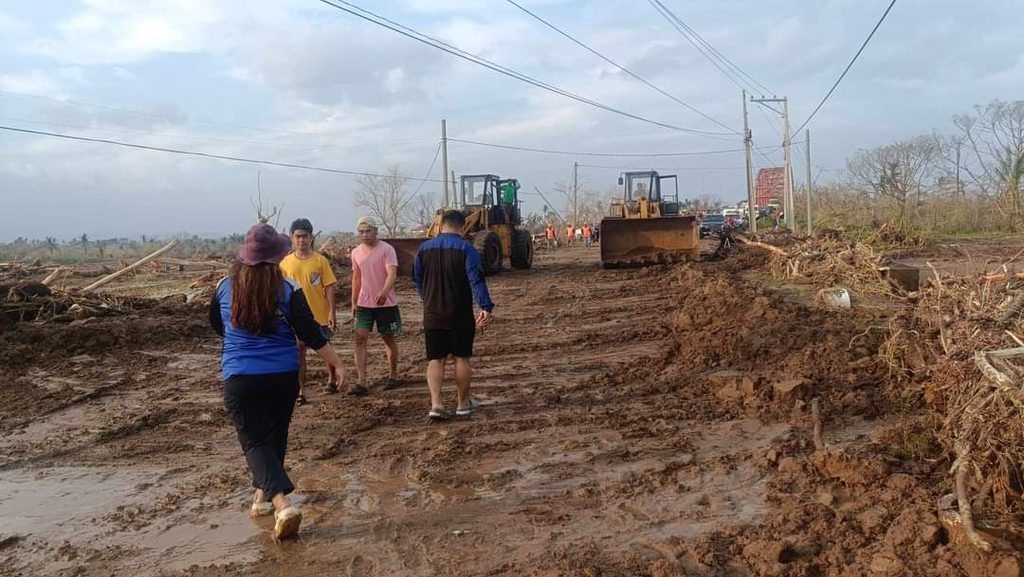Cagayan grapples with flooding as Typhoon Ofel leaves, Pepito enters PAR
PAMPANGA, Philippines – Cagayan province continues to grapple with the aftermath of a series of tropical cyclones, with the most recent, Typhoon Ofel, leaving over 40,000 individuals still affected.
Provincial Disaster Risk Reduction and Management Council (PDRRMC) chief Ruelie Rapsing said on Friday, November 15, that some of the residents had been dealing with the effects of the Cagayan River and its tributaries swelling since Severe Tropical Storm Nika.
The latest figures show that 41,418 individuals, or 21,126 families, have been impacted. They are in 241 barangays across 19 municipalities
In response to the rising floodwaters, authorities have evacuated 29,808 people, or 9,959 families, from 245 barangays.
Cagayan Governor Manuel Mamba said that Typhoon Marce, which hit land in their province, had the worst impact. The flooding has mainly affected residential areas and farmlands in 99 barangays while many communities still have impassable roads and damaged bridges that have left many residents stranded.
Outdated flood control masterplan
President Ferdinand Marcos Jr. emphasized the need to focus on updating the flood control masterplan developed by the Department of Public Works and Highways (DPWH) and the Department of Environment and Natural Resources (DENR) to better address the province’s flooding challenges.
According to Mamba, the current flood control masterplan was developed nearly 25 years ago, and is now outdated. He noted that significant environmental changes, including deforestation and siltation, have worsened the flooding risks.
“The flood control plan was developed by JICA (Japan International Cooperation Agency) over 20, even 25 years ago, and a lot has changed since then. We’ve had deforestation, increased siltation. That’s why we need to revisit and restudy it,” Mamba told Rappler in a mix of Filipino and English on Friday.
“For example, in Buntun, they dredged and spent P1.1 billion, but if you look at it now, the situation has actually worsened.”

Mamba said the province has not yet fully recovered, as it remains under a state of calamity following Typhoon Julian in September. The quick response funds are also running low, he added.
“We haven’t fully gotten back on our feet yet. The thing with super typhoons is that it takes us a while to recover,” said Mamba.
Severe Tropical Storm Ofel exited the Philippine Area of Responsibility on Friday afternoon, re-entered the PAR in the evening, already weakened into a tropical storm.
Can’t take chances with Typhoon Pepito
Mamba gave assurances that preparations are being made for Typhoon Pepito, noting that the region cannot afford to underestimate its potential impact. He drew parallels to the situation during Typhoon Ulysses in 2020, when the province was heavily affected despite not being directly hit.
As of 11 pm on Friday, Pepito continued to gain strength over the Philippine Sea, and Metro Manila and parts of central and southern Luzon, Bicol, and Eastern Visayas had been placed under wind signals.
“With Pepito, we can’t say we won’t be affected. Look at what happened with Ulysses, we weren’t directly hit, but Marikina was. Even though we weren’t directly struck, the heavy rains from Ulysses caused massive flooding. Four days of rain in Nueva Vizcaya, Quirino, and Isabela led to what became our ‘mega flood,’” Mamba said.
“It could happen again because the ground is already saturated. Even a small amount of rain could trigger flooding, so we’re also anticipating that,” he added.
Local officials continue to provide aid, although access to some areas remain difficult due to the extensive damage to infrastructure. – Rappler.com
